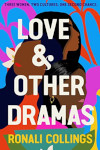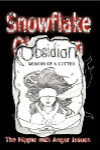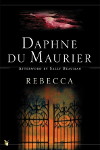Charlotte Brontë – Jane Eyre
Posted 8th October 2010
Category: Reviews Genres: 1840s, Drama, Mystery, Romance
3 Comments

When I opened Jane Eyre I don’t know what I expected, Austen, perhaps – humour, entertainment, but an all too familiar tale of an emboldened young woman making her way in a society that was not her own. I didn’t expect what I actually found.
Publisher: (Numerous, but I’d wager Vintage would be a good one)
Pages: N/A
Type: Fiction
Age: Adult
ISBN: (Vintage’s is 978-0-099-51112-0)
First Published: 1847
Date Reviewed: 1st October 2010
Rating: 5/5
Not long ago I was in the bookshop buying a copy of Pride And Prejudice for my mother (who, I lament, has still not read it). The assistant said it was a great book but then proceeded to recount the glories of the Brontës. I listened in earnest as I intended to read Charlotte Brontë’s work next. The sisters were darker, he said, Austen was too light humoured. He asked his colleague, who was browsing the shelves on this mid-week slow day, for her opinion on who was better. Austen, she said. My assistant said I should read Brontë. How right he was in his pronunciations.
Now one could say that I have missed the boat by over a hundred years in writing this review, but, and this is something I believe I touched on in my review of Pride And Prejudice, there is the idea that it’s ok to review a classic. It is important, I feel, that each generation brings to the book’s reputation their own reflections on it as surely this routine will enable those of a particular generation to decipher how this book might appeal to them. Without modern day discussion, or indeed simply educational study, all a potential reader has to go on is ancient reviews written by people of a different time; it is by updating opinion that future readers will see for themselves how the book might be accepted by them in a way that is appropriate for their own time.
I suppose I should stop there with my views on classical literature and turn specifically to the subject at hand, so here is a basic plot summary:
When Jane Eyre was a child she had no one, at least no one who gave her the love and caring attention she needed. Growing up in her aunt’s house she was bullied and treated with disdain despite her obedient ways. Sent to a boarding school Jane later flourished, but assuming the role of a teacher at the same school could only hold her interest for a short time. In seeking further employment, Jane alighted at Thornfield Hall. Mr Rochester, her employer, is a peculiar one – cryptic, seemingly forgetful, impulsive, and secretive. But how can he demand her full attention when the house, beautiful though it is, appears to be haunted by secrets?
Jane Eyre is a story that, for the most part, is ever moving and shifting between genres. It is so clear in its sections that one can point out the different “acts” with little difficulty. And Charlotte (as there were three Brontës I will refer to the eldest as such) doesn’t stick to one or two themes either, the book contains a plethora, and their subjects are such that some are just as relevant in their original sense today.
The story is told as a memoir, directly to the audience. In the first person, for Jane hasn’t written a diary, she addresses the reader in an interactive way, asking them questions and for their opinion, as well as accurately guessing what they might be wanting to know. Be sure that whatever you are thinking, Charlotte has realised and will inform you of accordingly. Many a time I believed I wouldn’t get an answer to my query and then not only did Charlotte bring it to the fore, she had Jane speak to me in person.
A new chapter in a novel is something like a new scene in a play; and when I draw up the curtain this time, reader, you must fancy you see a room in the George Inn at Millcote, with such large figured papering on the walls as inn rooms have; such a carpet, such furniture, such ornaments on the mantelpiece, such prints, including a portrait of George the Third, and another of the Prince of Wales, and a representation of the death of Wolfe. All this is visible to you by the light of an oil lamp hanging from the ceiling, and by that of an excellent fire, near which I sit in my cloak and bonnet; my muff and umbrella lie on the table, and I am warming away the numbness and chill contracted by sixteen hours’ exposure to the rawness of an October day: I left Lowton at four o’clock a.m., and the Millcote town clock is now just striking eight.
A comparison I will make now with Jane Austen. Although I love Austen’s work it cannot be denied that she has a tendency to go into far too much detail than is required, forming incredibly long sentences wherein one can easily become lost. There is no such worry in Charlotte’s writing. Except perhaps during a specific section, which I will come to in a minute, Charlotte never pauses to provide superfluous description. The story, as said before, is ever moving. Charlotte knows her reader, she knows that (at least in her time) they are well versed in her world, for it is a real one, and that they don’t need to read about it apart from the descriptions of the made-up situation. I would say that it is quite possible that this style of writing is what enables Charlotte to bring in so many different elements of story to the book because she doesn’t have to worry about spending time – and pages, thus not becoming long-winded – on description. If you require definite evidence of Charlotte’s quest to remove unnecessary information, you only need look several pages in where Jane says that she is leaving out eight years of life from her account because they aren’t interesting enough to speak of.
Every setting in the book is beautifully lamented upon and a pleasure to create in memory and imagination. Though the book may begin shrouded in grey, Charlotte later moves it into hues of green, yellow, and white. She uses time of day wisely, contriving with the weather to create her own version of pathetic fallacy.
There was just one area that I found disappointing, the part where Jane comes into certain social arrangements in a village. I wished fervently that it wouldn’t be a cliché, that it would be different – but it wasn’t. I do not understand how someone so brilliant and able a storyteller could fall to such boring and coincidental devices. I failed to see, for that space of time, the genius reported by Virginia Woolf – a quotation displayed in glory on the back cover of my copy of the book.
The cook hung over her crucibles in a frame of mind and body threatening spontaneous combustion.
The characters are first-class. Although, where classic literature is concerned, Austen’s Darcy may be more famous, of more note is surely Charlotte’s Edward Rochester. Rochester is a fine creation; funny, sarcastic, and very much a speedy speaker; few were the times when I could imagine him speaking any slower than quickly. And it is in part because of his backtracking and contradictions of his words that he is so full of colour – you may not find out all that much about his interests but it is clear that here is a well-rounded person, no matter how gloomy he may aspire to be at times. Several of the quotations I made note of for their humour come from his dialogue; as an example, his supposing that you might not think of hating someone you already despise. With these in mind I would like to reference a scene that particularly stood out for me, that of the gypsy’s visit to Thornfield Hall. Make no mistake, it goes on for several pages but it is here that Charlotte first demonstrates true comedic genius.
Jane Eyre herself is just as fantastic a character, but one can overlook her qualities sometimes due to the fact that she is the eternal focus, being the narrator. She is as appealing and relevant today as a character newly penned in the 21st Century.
The writing is superb. So differently to Austen, Charlotte writes in a way that is very near to how we write today, save for perhaps her fondness for colons and semi colons, which she includes as if she earned a pound for each addition. Because of the style there is no need to study the text at all in order to make out her meaning, and so in style at least the book remains an easy read. However I would like to point out that there is a substantial amount of French used in the book. Charlotte has chosen her words well and included in most sentences hints as to the overall meaning, as long as you have a bare basic knowledge you should be able to get the gist. My own GCSE education from years ago sufficed.
The love story is perfect, and it is during the scenes between the anguish-ridden couple that dialogue takes over, as does of course interesting conversation (think of the character descriptions provided) and, because the dialogue is generally balanced between the two these are the scenes that flow quickly. The only time you really realise just how long the book is is once you get to the end of one of these dialogues and turn the page to see line upon line of description in preparation for the next sequence.
One of the ways in which the book amazes me is the ending, and looking back on it I can see how Charlotte was not making it into the kind of scene you might have expected and would’ve expected had it been written by someone else. Everything points to her being a person open to modern ideas. That doesn’t mean she is perfect, she was of course a product of her society and so some issues in the book you have to read remembering that, but she was a forward thinker and far away from being narrow-minded, by both the standards of her time and now.
Charlotte Brontë is a master storyteller and although I’m yet to read her other work I have a feeling this will remain my favourite. I have tried my best in this review but a summing up could never really explain just how and why this book is so incredible. I heartily recommend it to one and all with no exceptions.
Related Books
October 16, 2010, 7:47 pm
I love this book and it gets better with every re-reading. Glad you enjoyed it.
Charlie: Welcome. That’s good to hear because I’m looking forward to re-reading it!
3 Comments
Comments closed





























October 11, 2010, 10:16 am
Ah, the everlasting argument about who’s better Austen or Brontë shows up in a bookstore, does it? There is supposed to be this whole hatred thing between Austen and Brontë fans, I don’t know, I always feel a little out of the loop because I love both.
As for Jane Eyre, I loved loved loved it the first time I read it and I cannot wait to reread it.
And yes, of course it is okay to review a classic!
Charlie: I remember reading something somewhere about Charlotte not liking Austen’s work for some reason, maybe that’s it? I hope one can be a fan of both though and not risk the wrath of extreme fans! I think I’ll be rereading it soon too, actually I definitely will.